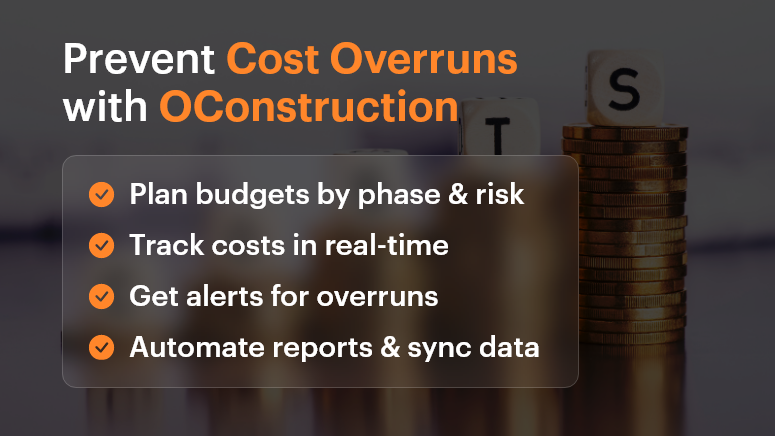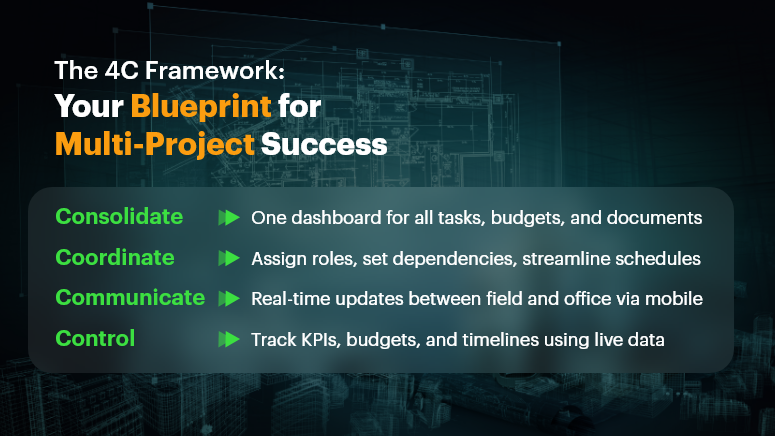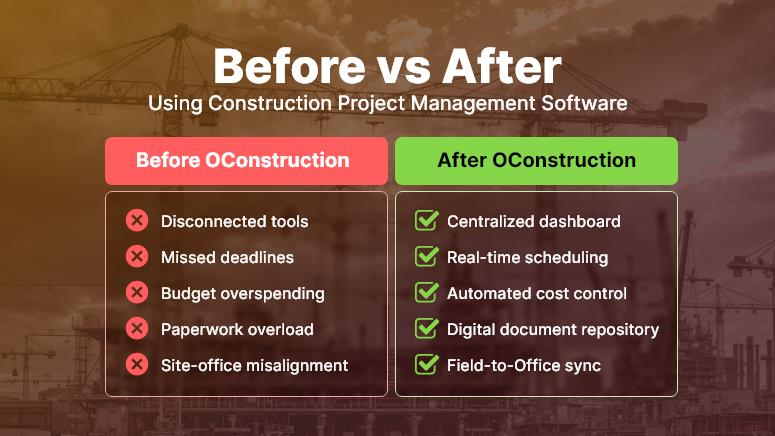In the construction industry, controlling costs is one of the biggest challenges. Material prices fluctuate, labor overruns happen, and delays on-site can quickly turn into budget disasters. But what if you could reduce these issues with a single tool?
That’s where smart project management software like OConstruction steps in—giving you the visibility, control, and real-time collaboration your construction projects need to stay on time and under budget.
Why Construction Projects Go Over Budget
Before we dive into the solution, let’s look at the most common reasons construction costs spiral out of control:
- Poor scheduling and miscommunication
- Inefficient use of labor and equipment
- Lack of real-time updates on-site
- Missed deadlines and overtime costs
- Manual data entry and paperwork delays
All of these are avoidable—with the right tools in place.
How OConstruction Helps You Cut Costs
OConstruction is an all-in-one construction project management software designed specifically to reduce waste, improve accountability, and maximize your project ROI.
Here’s how it helps:
1. Real-Time Budget Tracking
Monitor project costs as they happen. Get instant updates on labor, materials, and subcontractor expenses so you can take immediate action before the budget slips.
2. Smarter Scheduling
Assign tasks, set dependencies, and track milestones all in one place. With automated notifications and calendar views, your team stays aligned-and your timelines stay on track.
3. Field-to-Office Communication
Whether your teams are on-site or in the office, OConstruction keeps everyone connected. Say goodbye to delayed updates or missed approvals that lead to costly errors.
4. Document & Resource Management
No more lost files or outdated spreadsheets. Store drawings, contracts, purchase orders, and daily logs in the cloud-accessible anytime from any device.
5. Subcontractor Coordination
Easily assign and monitor subcontractor tasks, track deliverables, and hold vendors accountable with shared timelines and clear scopes of work.
Real-World Benefits You Can Expect
- Faster Project Completion
- Lower Labor Costs
- Fewer Cost Overruns
- Improved Resource Allocation
- Less Administrative Overhead
Contractors using smart software report savings of up to 20% in overall project costs, simply by improving communication, planning, and tracking.
Start Saving Today with OConstruction.
If you’re still managing construction projects with spreadsheets, whiteboards, and endless WhatsApp groups—it’s time for an upgrade.
OConstruction gives you the tools to run your projects smarter, faster, and more profitably. From the first estimate to final handover, everything stays organized, visible, and efficient.
Start your journey to cost-effective construction today. Visit OConstruction.io
Final Thoughts
Cutting construction costs isn’t just about buying cheaper materials or hiring less labor. It’s about improving how you manage your projects—from planning to execution. With OConstruction, you’re not just saving money—you’re building smarter.











